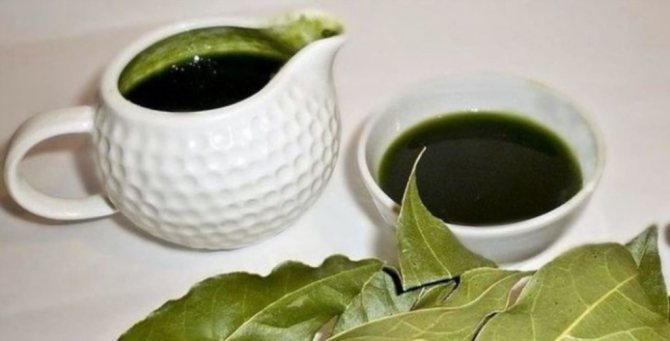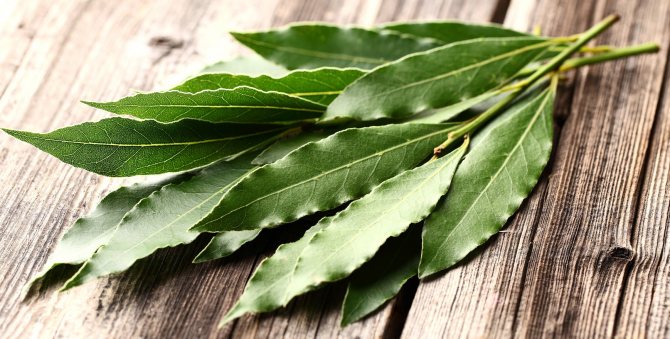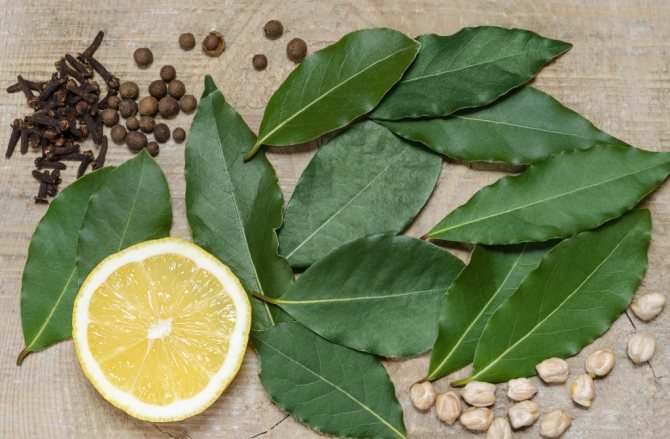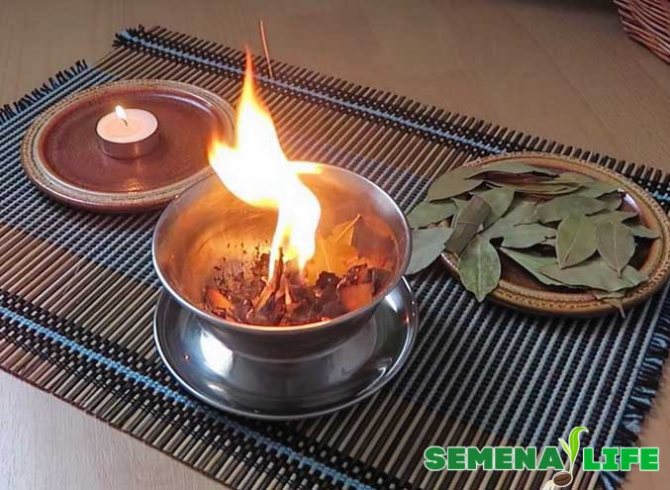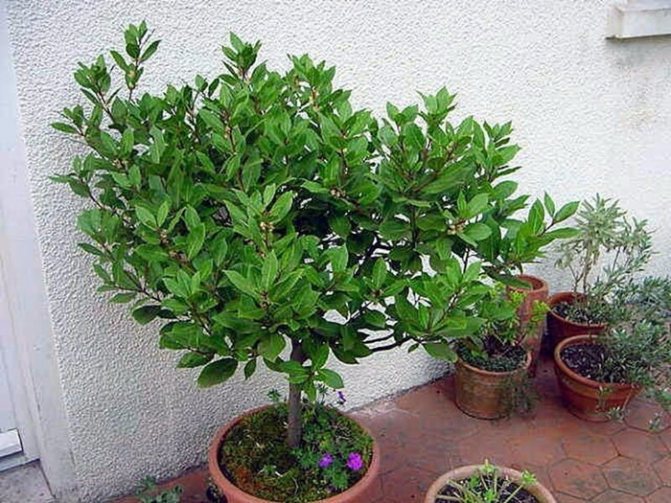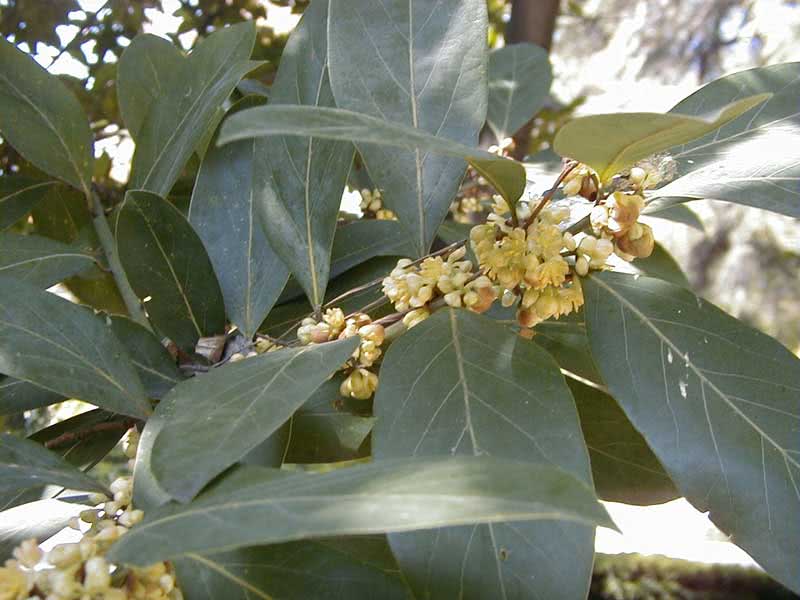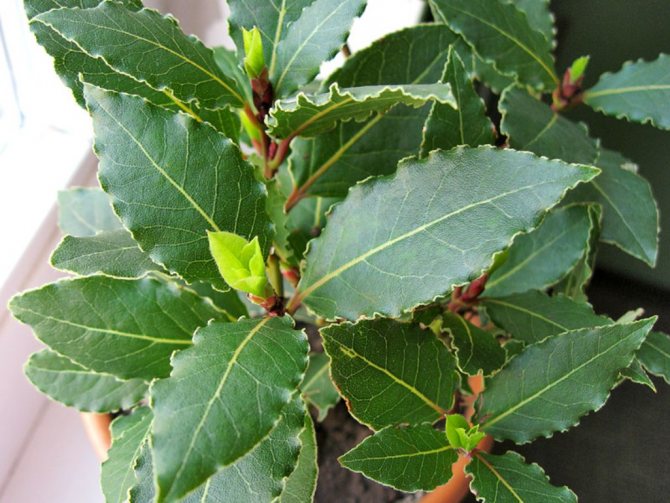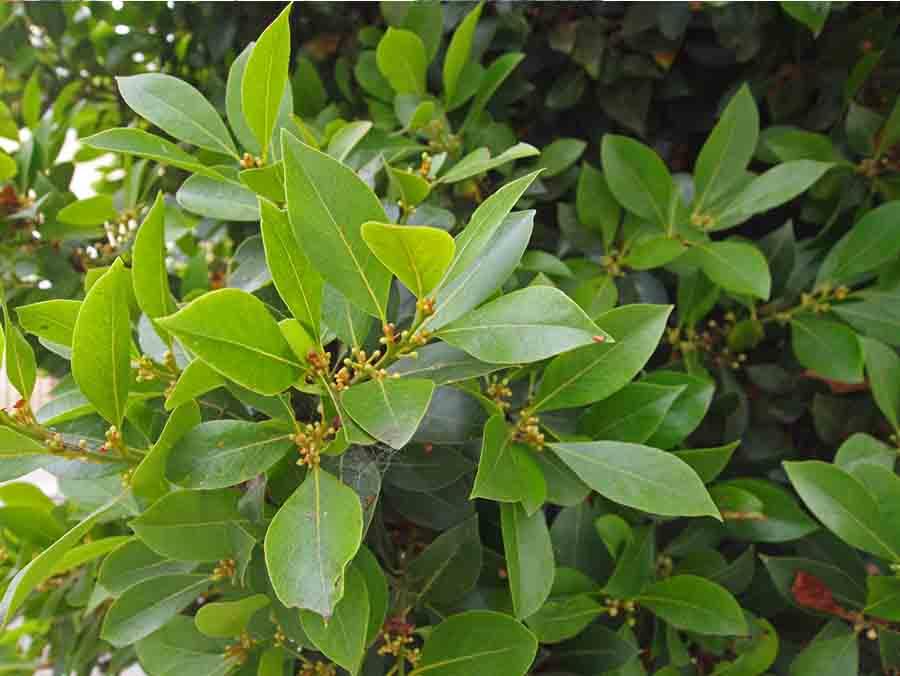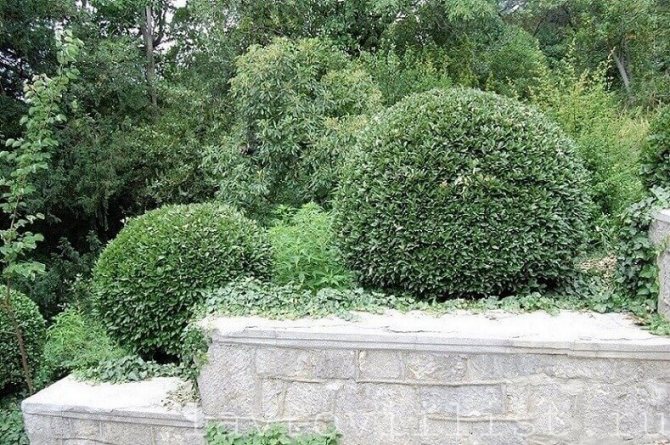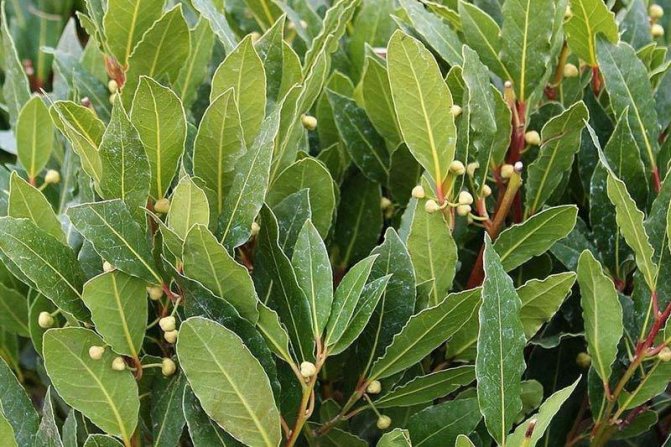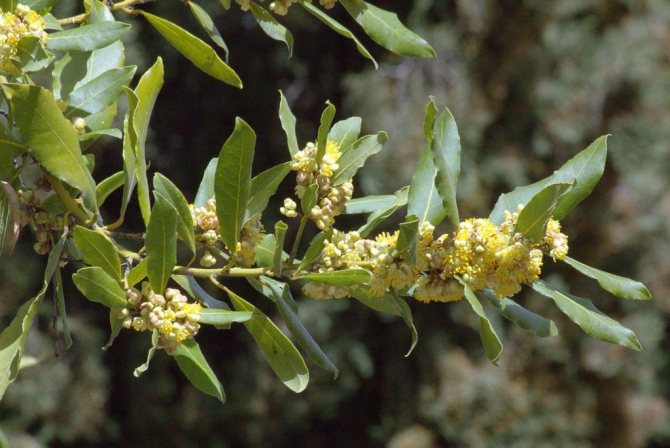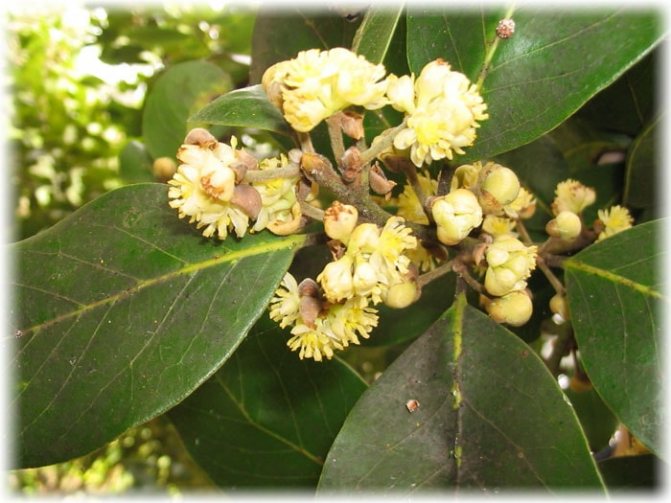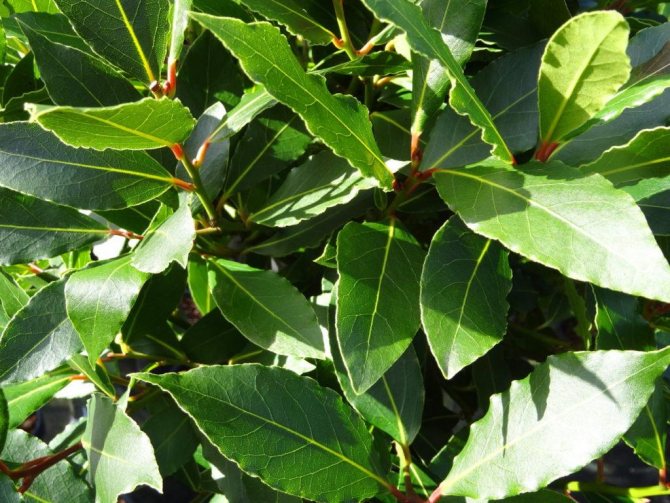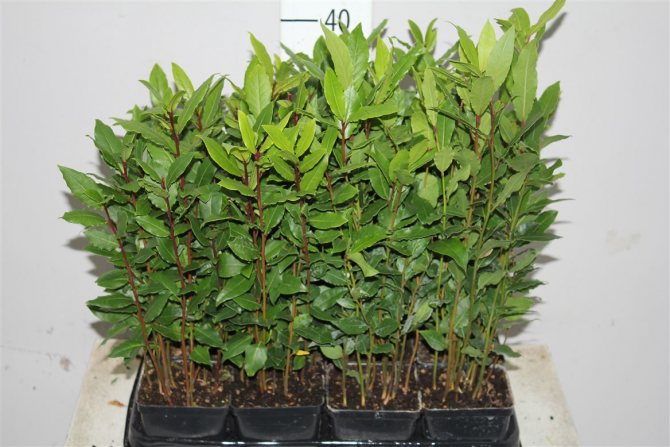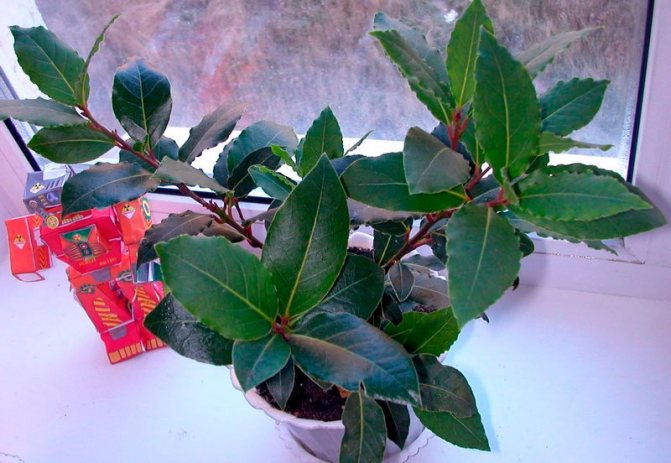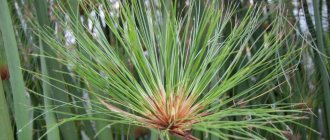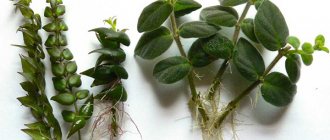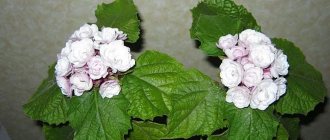Almost every plant belongs to a family. Surely everyone has heard of the laurel family. Today we will talk about a plant called Laurel. This is an aristocrat among the trees, he is considered a noble tree. It should be noted that it is widely used in the culinary arts of different countries.
Laurel is another plant that came to us from the Mediterranean. Now it is very fashionable to grow it at home. At the moment, mankind knows more than forty of its species.
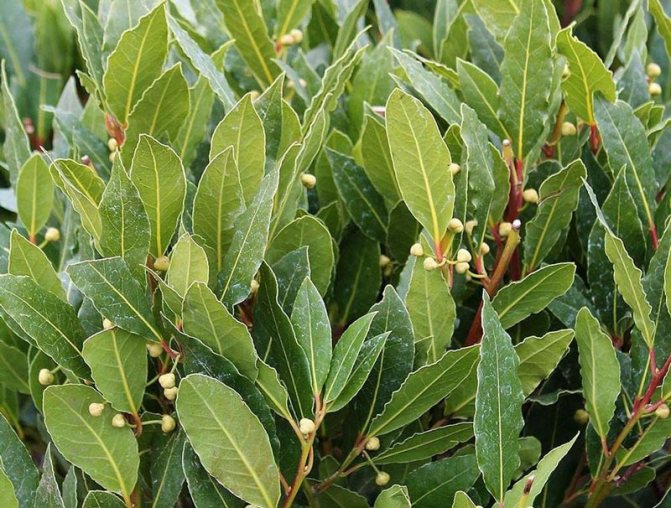
Laurel is mentioned in ancient Greek legends, and more specifically the legend of Daphne and Apollo. It is believed that its branches help people to see prophetic dreams. Laurel symbolizes glory and is considered a holy tree.
Sowing dates for laurel
Laurel noble can multiply in several ways, but most often cultivation of a plant from seeds or by cuttings is practiced.
The latter option is more preferable, since it takes less time, however, many gardeners still practice seed reproduction.
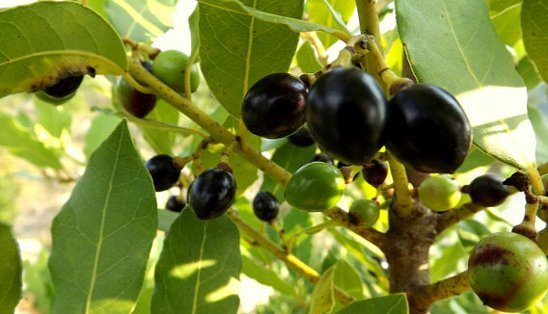

The best time for sowing seeds indoors will be the end of winter or the beginning of spring, but if you purchased seed material at a different time, then it is better not to use it and hide it for several months in a cool place, after sprinkling it with sand.
Under such conditions, bay leaf seeds can be safely stored for 2-3 months, although in this case it will be difficult to guarantee 100% germination.
Did you know? In the wild, a laurel tree can reach 18 meters in height, and the trunk diameter often corresponds to 40 cm (lives 300-400 years).
The intricacies of home care
In the natural environment, laurel firmly tolerates the vagaries of nature, therefore it easily adapts to room conditions.
Any window, illuminated or shaded, is suitable for placing laurel. A place with sun rays is preferable, then the bush will be thicker and more beautiful. Dense foliage is not afraid of sunburn, drafts and cold air, but you should not forget about regular ventilation of the room.
The life cycles of laurel are tuned to a subtropical climate with hot summers and cool winters. In the summer months, the temperature of the content should be + 20-27 ° C, and in winter + 5-15 ° C is enough with complete rest and shade. In summer, the laurel will be comfortable on the balcony or in the garden, and a loggia is suitable for wintering. Laurel perfectly tolerates heat and is resistant to lowering the air temperature to 0 °.
In the spring, the houseplant laurel needs a step-by-step accustoming to the sun. First, the pot is exposed under the rays for a short time, gradually increasing the stay.
To maintain the decorativeness of the crown, formative pruning is carried out. The best time to trim the bush is at the end of summer, when vegetative growth is slowing down. With good care, indoor laurel species live for more than 15 years.
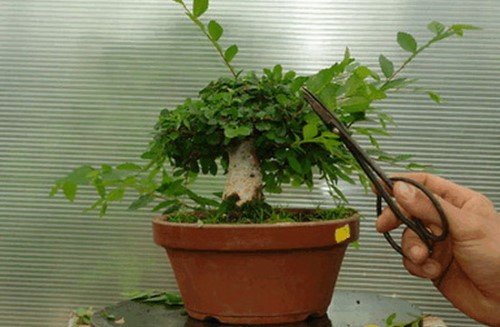

Pruning
Laurel from seeds: how to choose high-quality planting material
It's good if you have the opportunity to pick laurel berries yourself or purchase plant seeds from trusted people, but in most cases you have to buy them from strangers.
Therefore, it is important not only to know what laurel seeds look like (large, oval, up to 2 cm in length, with a thin and fleshy membrane), but also to take into account their shelf life (from the time of packaging), especially when buying purified material, since unrefined seeds stored 2-4 times longer than peeled ones.
By themselves, laurel seeds are already very difficult to germinate, but if you buy specimens that are more than one year old, their germination will take twice as long.
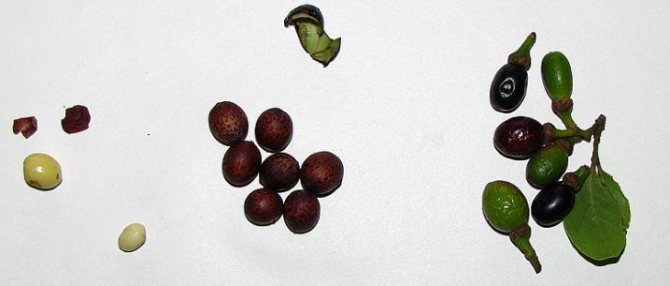

Important! The seeds of laurel noble contain a large amount of essential oils, which are the reason for the slow germination of the plant. Newbies in the field of gardening often do not take this fact into account and simply stop caring for the crops, later complaining about the failure of their venture.
Why does bay leaf dry at home, what to do?
If the bay bush begins to dry and yellow leaves begin to appear, which, moreover, lose their shine, the plant may have a number of reasons for this condition:
- Waterlogged soil, resulting in root rot.
- Tired soil that does not provide the plant with essential nutrients.
- There are pests in the root system or on the plant
- The temperature regime is not observed: it is too cold, an abundance of drafts.
- The plant suffers from direct sunlight
- The plant needs a transplant or a larger pot
Climatic conditions for laurel breeding
The noble laurel belongs to subtropical plants, which means that it is excellent for growing in those climatic zones where the temperature does not drop below -12 ... -9.5 ° C. In addition, in some cases, such plants can successfully tolerate short-term frosts and up to -15 ° C.
However, matching the climatic zone alone is not enough to guarantee the well-being of laurel in the circle of other trees in your garden. The success of cultivation is also influenced by other features of the territory, which, first of all, include the composition of the soil and illumination.
In nature, the laurel tree takes root well both in the sun and in partial shade, as well as in the undergrowth of deciduous forests. However, the full saturation of the leaves with essential oils is possible only with good sunlight throughout the entire spring-summer period.
Only in this case, by the end of November - beginning of December, you will be able to get the most ripe seasoning for culinary purposes or excellent raw materials for medicinal use.
Shrub varieties
Canarian (Azores)
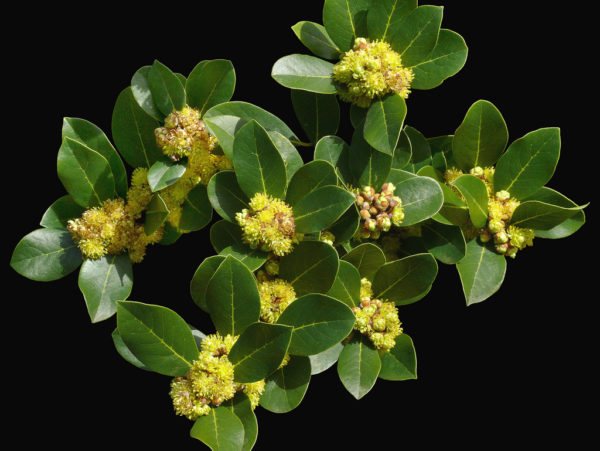

The maximum grows up to 15 meters, differs in the pubescence of the shoots. Lives in the Canary Islands and the Azores. The leaves are distinguished by a rich green color, have the shape of an oval. They reach 15 cm in length and up to 6-8 cm in width. Blossoming occurs with flowers of an umbrella-shaped form of a yellowish hue. They grow from the axils of the leaves in small groups. The flowering period is from late spring to summer.
Noble
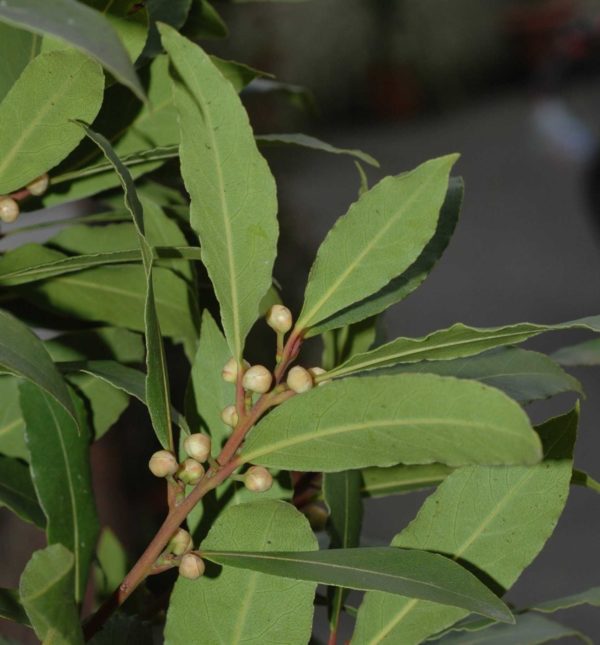

Reaches a maximum of 6 meters. Its leaves are up to 20 cm long, and reach 8 cm wide. They are velvety to the touch, pointed at the tips. The plant blooms with yellowish flowers in umbrella-like groups of 2 in leaf axils. It begins to bloom in late spring.
How to prepare the soil for sowing a laurel tree
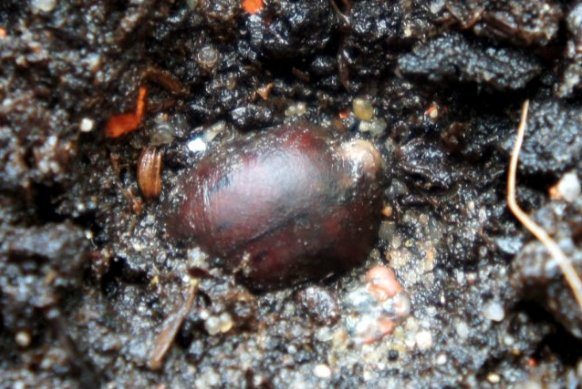

When laurel propagates by seeds, one cannot but take into account the composition of the soil in which they are sown. You also need to understand that the temperature of the earth should not be lower than 20 ° C, since it will be difficult to achieve high germination of seeds in cold soil.
A nutritious and loose substrate is ideal for growing laurel, but he does not like acidic soils, which is why experts recommend adding wood ash to the soil.
Before planting the seeds directly, you can prepare the following potting mix: two parts of leafy soil must be mixed with a similar amount of humus soil and add one part of sod soil, as well as one part of peat and sand.
A mixture of equal parts of sod and leafy land, to which 20% of sand is added, is also considered a good option.
The resulting substrate is scattered into separate pots with a diameter of at least 10 cm and a little ash is added to it.
Did you know? The beneficial properties of bay leaves were known several millennia ago and were successfully used in folk medicine. In addition, the ancient Greeks and Romans attributed magical properties to this plant and believed that a tree leaf could bring them good luck.
Appearance
First, let's figure out what a laurel tree looks like. It looks like a bushy bush - with proper care and timely pruning. The leaves are elongated, narrow and pointed towards the end - however, they have been seen by everyone who used bay leaf in cooking.
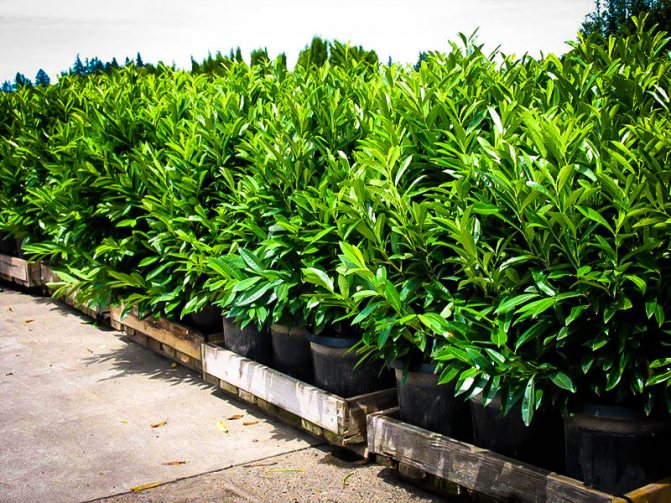

It is enough to tear off one leaf and grind it in your fingers, so that the pleasant aroma of the familiar spice hangs in the room.
The size depends a lot on the quality of the potting medium and the size of the container. If you grow a laurel plant in a large tub, then over time it will turn into a real tree. When grown in a small container, its size will be much more modest - there is simply not enough soil for growth.
Preparing seeds for planting
Growing laurel from seeds also provides for some preparatory measures for sowing material.
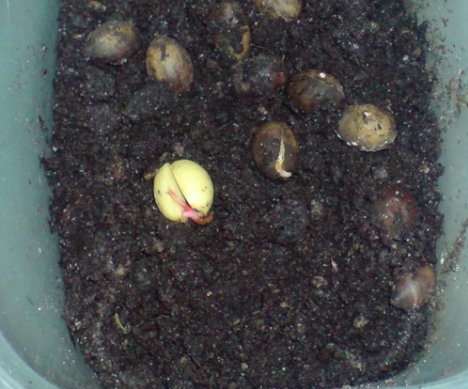

For example, the seeds of this plant do not tolerate drying and retain good germination only for 3-5 months, and then when stored in a cool and humid room.
Before directly planting seeds in the ground, you should free them from the shell, otherwise you will have to wait for seedlings for a long time.
It is best to sow laurel in separate pots with a volume of at least one liter or directly into open ground (in a permanent place).
Usually, the seeds germinate from April to August, but there are times when they begin to germinate only in January, and then, in the presence of severe frosts, the seedlings die immediately.
To increase seed germination, you must adhere to a few simple rules: remove the fruits from the tree in November, keep the seeds moist, but not wet until planting (no more than 2-3 months), be sure to remove the skin before planting in the ground.
The germination process can also be accelerated by pre-soaking the seeds in a weak solution of potassium permanganate for 2-3 days, after which the oily pericarp should be cleaned.
What kind of land is needed for a bay leaf, what kind of pot?
"Correctly" selected soil for a plant is a guarantee of its health and good development. Drainage is of great importance for laurel, so be sure to pour a drainage layer on the bottom of the pot (a special breed in the form of small pebbles, sold in flower shops).
It is best to choose a laurel pot from a natural material, be it clay or ceramics. Such material, unlike plastic, will not let the roots "suffocate". The bottom of the pot should have a sufficient number of holes so that the water leaves well and does not stagnate, provoking fungus, as well as rotting of the roots.
The soil for the bay bush is all-purpose, any that you can find in a professional store. You can also prepare the mixture yourself, for this you will need:
- A piece of leafy land
- Part of the turf land
- Part of quartz sand
- Part of humus (can be replaced with compost)
IMPORTANT: All soil components are taken in an equal ratio of one to one quantity.
The reaction of the soil to acidity must necessarily be neutral, if you need to balance the acidity (this often happens when peat is present in the soil), add a little wood ash. The size of the pot depends on how you plan to grow laurel, the more you pick up the pot, the stronger the root system will grow, and therefore the bush itself.
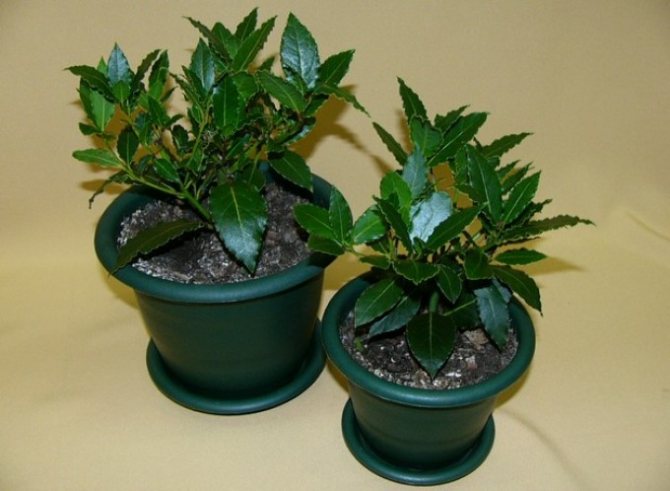

Young home-grown laurel bush
Sowing scheme laurel
Planting laurel seeds is a relatively simple process. Having prepared the soil according to one of the above schemes, you need to place the seeds into it to a depth of 1-2 cm and, having sealed them, soak the earthen lump well.
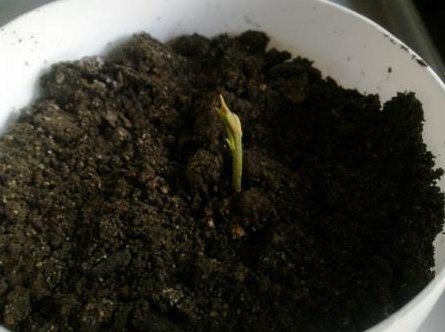

Then the container with the crops is covered with glass or transparent plastic wrap (it should not touch the ground) and placed in a warm place.
When the first shoots appear, the "capes" are removed and the moisture of the earth is monitored, since even a little drying can significantly slow down the growth of seedlings.
As soon as the first two leaves appear on the plants, they must be planted in a 2 x 2 pattern in open ground or in separate small pots.
Crown formation
Laurel grows pretty quickly. And, for which experts appreciate it, it easily tolerates pruning for crown formation. It can be shaped like a ball, pyramid, cone and any other.
It is advisable to carry it out annually - the plant tolerates frequent, but small cuttings much easier than the few, but large, solid ones.
There is a lot of controversy about the optimal timing. Some experts believe that pruning is best done in March-April. Others say that the most appropriate time for this procedure is late summer or early autumn. In any case, you need to carefully shorten the woody twigs. It is advisable to choose a site immediately after a large, healthy kidney. Then, after pruning, a new shoot will start from it, and the bush will acquire even greater volume and fluffiness.
Of course, when shaping the crown, only a well-honed pruner should be used so that it is easy to cut branches, causing a minimum of damage to the plant.
How to care for laurel seedlings
As you can see, growing laurel from seeds right at home is not such a difficult task, but seedlings need proper care both before and after seed germination.
The glass or film covering the container with seeds must be removed for 15-20 minutes daily. Airing and maintaining constant humidity will prevent the seeds from drying out, and with the appearance of the first leaves, there will be no need for shelter.
At this time, the plants should be transferred to a brighter place (after about 30-40 days).
Once every two to three days, the crops are watered with settled water at room temperature, and after 2-5 true leaves are formed in the seedlings, a pick is performed.
Important! The taproot of a laurel seedling is long and fragile, so it is watered abundantly before transplanting the plants (this softens the soil).
Watering and feeding
The laurel bush needs a regular supply of moisture. On hot days, water the plant daily. It is necessary to ensure that the soil has time to dry out during the breaks. Stagnant water causes disease and death of the bush. In winter, the watering regime is no more than 1 time in 14 days.
Proper care of home laurel includes spraying. Humid air is very favorable for development. The procedure is recommended in the morning and in the evening every day. An alternative solution is a pallet with wet pebbles or expanded clay. You can place dishes with water next to the flowerpot.
During the growing season, fertilizing is applied 2 times a month with mineral fertilizer for evergreen or deciduous plants.

